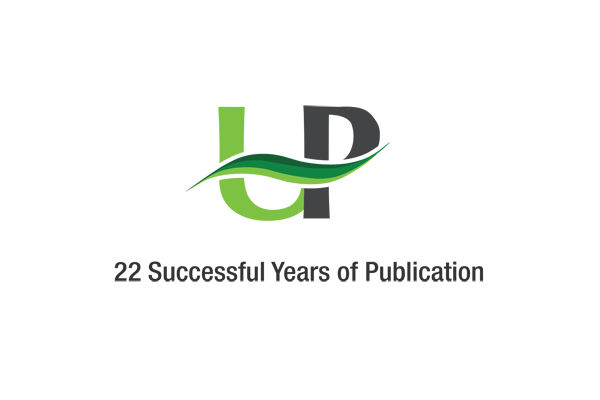
Pakistan’s Economy Shows Signs Of Recovery, Growing Resilience In FY 2025.
Umer Jamshaid Published July 28, 2025 | 06:00 PM

ISLAMABAD, (UrduPoint / Pakistan Point News - 28th Jul, 2025) The Federal Minister of Finance and Revenue informed on Monday that Pakistan’s economy has demonstrated clear signs of recovery and growing resilience in the Previous Fiscal Year, 2025.
Pakistan’s economy sustained growth momentum at 2.68%, while inflation fell sharply to 4.5%, supported by a lower policy rate, exchange rate stability, and prudent macroeconomic management, according to “Monthly Economic Update and Outlook,July 2025, issued by the Ministry of Finance and Revenue here.
According to the report, social protection and climate resilience will also remain integral to aligning near-term economic actions with Pakistan’s long-term development goals.
Accordingly, real GDP is expected to grow by 4.2% in FY2026, alongside continued price stabilization.
The current account recorded a surplus of $2.1 billion, marking the first annual surplus in 14 years and the largest in 22 years, reflecting improved external balances, stronger exports and remittances, and rising foreign exchange reserves.
The fiscal deficit has been contained at 3.1% of GDP for July–May FY2025, showing improved fiscal discipline and resource management, the report said.
These improvements have strengthened market confidence, eased Currency pressures, and created space for monetary easing to support growth.
Building on this momentum, FY2026 begins with a renewed focus on sustainable and inclusive growth and Policy priorities include continued fiscal consolidation, enhanced revenue mobilization, modernization of the agriculture and industrial sectors, and improvements in the business climate and human capital development, the report said.
According to the data, the Large-Scale Manufacturing (LSM) sector registered a 7.9 percent month-on-month (MoM) growth while a 2.3 percent year-on-year (YoY) increase in May 2025.
The report revealed that the decline in Perishable food prices is moderating Inflation and CPI averages 4.5% for FY2025, a substantial drop from 23.4% during the same period last year.
The CPI inflation recorded at 3.2 percent YoY in June 2025, compared to 12.6 percent in June 2024. MoM, it increases by 0.
2 percent, following a 0.2 percent decrease in May 2025.
A key factor behind this moderation is the significant decline in perishable food prices, which fell by 10.6 percent YoY, easing pressure on the overall food basket.
During Jul-May FY2025, the fiscal deficit reduced significantly to 3.7 percent of GDP from 5.0 percent recorded last year.
Similarly, Primary surplus increased to 3.1 percent of GDP (Rs.3,594.6 billion) during Jul-May FY2025 from 1.5 percent (Rs.1,620.5 billion) last year due to contained growth in non-markup spending.
On stability in monetary indicators and Capital market optimism, the report said that during July 1 -June 27, FY2025, Pakistan’s broad money supply (M2) grew by 13.7 percent compared to 15.0 percent growth observed last year.
In which, the Net Foreign Assets (NFA) increased sharply by Rs.1,757 billion, compared to Rs.675.2 billion increase recorded in the corresponding period.
Net Domestic Assets (NDA) rose by Rs.3,164.9 billion, compared to Rs.3,976.8 billion last year.
According to the agriculture sector during July–May FY2025, agricultural credit disbursement rose to Rs 2,300.4 billion, marking a 16.6 percent increase from Rs 1,972.8 billion in the same period last year.
The data report also shown optimism for current FY 2025-26 and said that Pakistan’s economy is expected to sustain its recovery in early FY2026, supported by improved macroeconomic fundamentals and rising investor confidence.
Large-Scale Manufacturing (LSM) is likely to maintain momentum in June 2025, driven by increased private sector credit off take and expanding production activity.
The rebound is expected to boost imports of raw materials and intermediate goods while supporting exports of value-added products.
Strengthening domestic demand, a stable exchange rate, steady global commodity prices, and improved foreign demand are likely to enhance exports, remittances, and imports in July 2025, reinforcing external sector stability. Inflation is projected to remain within 3.5 to 4.5 percent, though risks from recent heavy rains may affect agricultural yields and supply chains, the report said.
Recent Stories

Ammar bin Humaid establishes new working group to boost investment in Ajman

Dubai Culture unveils creative burst to Al Quoz with new murals

Development of Egypt's Arcadia-28 oil well boosts output to 4,100 boe/d

38 Emirati humanitarian aid trucks enter Gaza as part of Operation Chivalrous Kn ..

Abu Dhabi ILCA 4 sailing team heads to Ras Al Hadd, Oman for intensive training ..

Abu Dhabi World Grappling Championship to debut in Al Ain Region this August

DEWA powers more than 7.2 million digital transactions in H1

ENEC, Hyundai E&C sign MoU to advance global nuclear energy collaboration

Bodour Al Qasimi conferred University of Leicester’s first-ever honorary profe ..

Abu Dhabi Chamber members exceed 158,000 in H1-2025

DAE announces purchase, leaseback agreement with United for 10 Boeing 737-9 airc ..

Ministry of Finance achieves 96.57% in Customer Happiness Index for H1
More Stories From Business
-
Pakistan’s economy shows signs of recovery, growing resilience in FY 2025.
8 minutes ago -
Netherland's envoys pays farewell call on finance minister
8 minutes ago -
Tanveer orders strict monitoring of sugar mill stocks
38 minutes ago -
ICCI business delegation departs for Bangladesh: to hold B2B meetings at Dhaka Chamber
38 minutes ago -
Gold prices decrease by Rs 100 at Rs 356,300
58 minutes ago -
PSX witnesses bullish trend, gains 172.77 points
1 hour ago
-
Commerce minister condemned sabotage on railway in Jacobabad
1 hour ago -
Shipping Activity at Port Qasim
4 hours ago -
NPO to organize webinar on “Cost of Quality” Turing Quality into Profit”
5 hours ago -
EXCHANGE RATES FOR CURRENCY NOTES
7 hours ago -
Foreign exchange rates
8 hours ago -

Currency Rate In Pakistan - Dollar, Euro, Pound, Riyal Rates On 28 July 2025
9 hours ago






